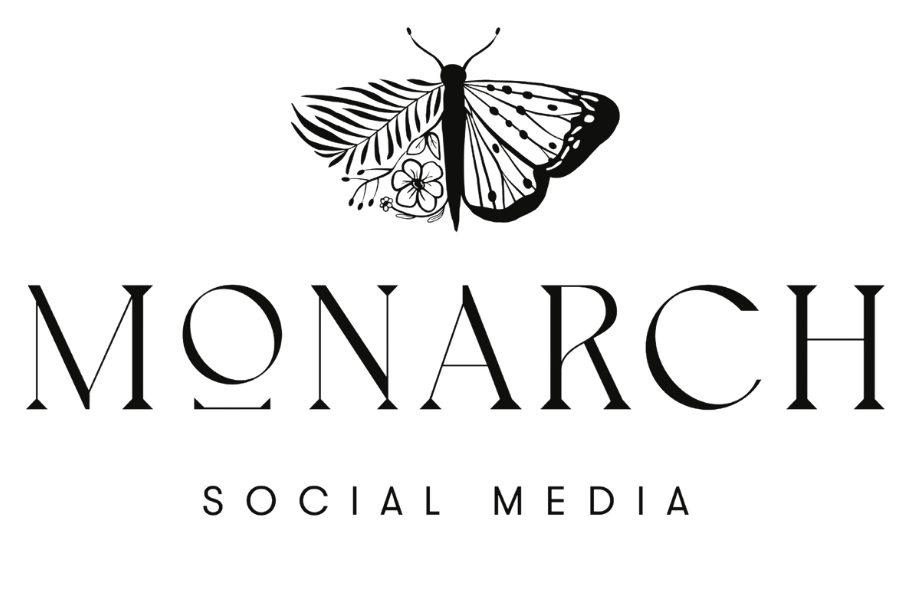You’ve probably seen the ad: “If we don’t get your content one million views in 30 days, you don’t pay.” It sounds bold. Risk-free. Maybe even revolutionary. But here’s the catch; they never said organic views. Paid ads can rack up a million scroll-by impressions in...
Build a Brand with Us: The Difference Between Content and Content Strategy
There’s a common misconception in the social media world that if you’re “posting consistently,” you’re doing it right. That if your feed looks good, people will find you. That if you just keep showing up, the results will follow.
That’s not how strategy works.
This blog post is about the quiet, foundational layer that separates content from content strategy. It’s a step that most brands rush through (or skip entirely) and then wonder why their social isn’t converting. We’re sharing what it actually looks like to build a strategy-first content plan, with no timeline, no pressure, and full creative control. This is what happens when you’re able to test in real time, respond to real people, and build something intentional from the ground up.
This is exactly what we’ve been doing with Monark Wild Rice.
Why This Matters Right Now
We’re choosing to focus on content strategy at this point in the Monark Wild Rice journey because it’s one of the most misunderstood parts of building a brand on social media. Everyone wants results, but few are willing to sit in the slow, messy middle, where real insights come from.
Before we even had a finished website, we were already testing content strategy on the Monark accounts. Because we were given full control and trust (no client sign-offs, no “make this go viral” expectations) we had the freedom to approach this the right way. That means experimenting. That means testing different content types. That means allowing the early performance data to guide the long-term strategy.
It ties directly to our last blog post about profile optimization. Many people think that posting content is the strategy. But posting alone doesn’t move the needle. What actually drives results is intentionality. It’s understanding what your audience is searching for, what they need to see before they buy, and how to meet them where they’re at. Strategy lives in that space between insight and execution.
What Strategy Looked Like for Us
When we started creating content for Monark Wild Rice, we deliberately skipped one of the standard first steps: defining the target persona. Instead of guessing who the audience might be, we let the content tell us.
That decision allowed us to move from assumption to insight. We put content into the world and tracked what people responded to. What they ignored. What made them comment, save, or share. The data gave us a head start, not just in building out our strategy, but in understanding who was already interested in the product.
We decided to lean into point-of-view videos and experiential food content. Think: wild rice in a pot, close-ups of textures, full meals coming together step by step. We tested different formats on TikTok (our most agile platform) and started to notice patterns right away.
At first, we posted once a week. Now, depending on the platform, we’re posting one to three times a week to build consistency and establish algorithmic traction.
And unlike our client projects, which often start with existing branding assets, persona documents, and defined target markets, Monark Wild Rice required a different approach. We weren’t working from a brief. We were building the brief from scratch.

What We Did Differently
The turning point in this process was deciding to lead with strategy, not content. We reviewed past content performance, identified what sparked engagement, and used that to test new formats.
For example, we wanted to know whether people were ready for content that positioned wild rice as just another side dish, or if they still needed education on what wild rice is and how to cook it. We tested a few “side dish” TikToks and they flopped. However, we just reposted them to YouTube and we’re already past 6,000 views with only 5 Shorts. So we circled back to the basics. We redid a video on how to cook wild rice in a rice cooker for TikTok, and performance spiked again on that platform.
That told us we’re still in an educational phase with the TikTok audience, yet on Youtube we’re in an inspirational phase for wild rice dish ideas. So we pivoted. Right now, our content strategy is all about answering questions and walking people through the how-to. We’re experimenting with voiceovers, DSLR footage, and different editing styles to see what resonates most.
And none of this is done in a vacuum. Our videographer noticed short cuts might work better. Our head of creative suggested testing more how-to sequences. Our comms manager is tracking comments, messages, and questions to feed back into content creation. Everyone is involved in shaping the strategy.
This is not just content creation. It’s ongoing research and response.

The Results So Far
We’re still early in the journey, but even now, we’re seeing a clear shift in how content is performing. We’re paying close attention to consideration-based metrics: saves, shares, comments, replays. Those signals tell us people are interested. They’re thinking about the product. They’re returning to the content. That’s a good sign.
This process has also informed our upcoming content calendar. We’ve planned out a full month of dishes and video ideas, all based on actual feedback and analytics. That means less guesswork and more intention. The kind of content that keeps showing up in search, not just for vanity views.
We also made the decision to shift from phone footage to DSLR to increase production value. Not because quality guarantees performance, but because we wanted to test whether improved visuals made a difference. Early signs are positive, and we’ll continue tracking.
Most importantly, this strategy work is laying the foundation for what comes next: a data-driven approach to defining our target demographic and personas.
What Other Brands Should Know
If there’s one thing we wish more brands understood, it’s this: strategy takes time. And it never ends. A good content strategy evolves with the platform, with your audience, and with your goals. It’s not something you build once and leave alone.
Another misconception? That anyone can “do social.” That posting pretty content and chasing virality is enough. But virality is random. You can’t control it. What you can control is what you learn from your data and how you use it to build a plan that grows over time.
The biggest tip we can offer: test first, without expectation. Use real questions from your audience as the seed for content ideas. Let the results guide your next steps. Then double down on what works.
The Real Takeaway
Content without strategy is just noise.
If you’re investing in social media, make sure you’re investing in thinking, not just output. The difference shows up in the results in what gets shared, what gets saved, and what starts building trust with your audience.
That’s what we’re doing here. And we’re inviting you to follow along as we keep building.
Subscribe to our newsletter to get these updates directly in your inbox, along with strategy insights you can apply to your own brand.
Next up: we’re sharing how we used early data to define the actual Monark Wild Rice audience, moving from raw insight to fully developed personas. No fluff, no assumptions. Just real people, real responses, and the strategy that’s forming around them.
Smart Businesses Double Down On Social Media When Everyone Else Pulls Back
When Fear Spreads, Focus Wins At Monarch Social Media, we’re hearing a familiar pattern: business owners are becoming cautious. And that’s understandable. The headlines are constant, the layoffs sound alarming, and the message online is clear: cut back, protect cash,...


